June in the garden: find time to relax
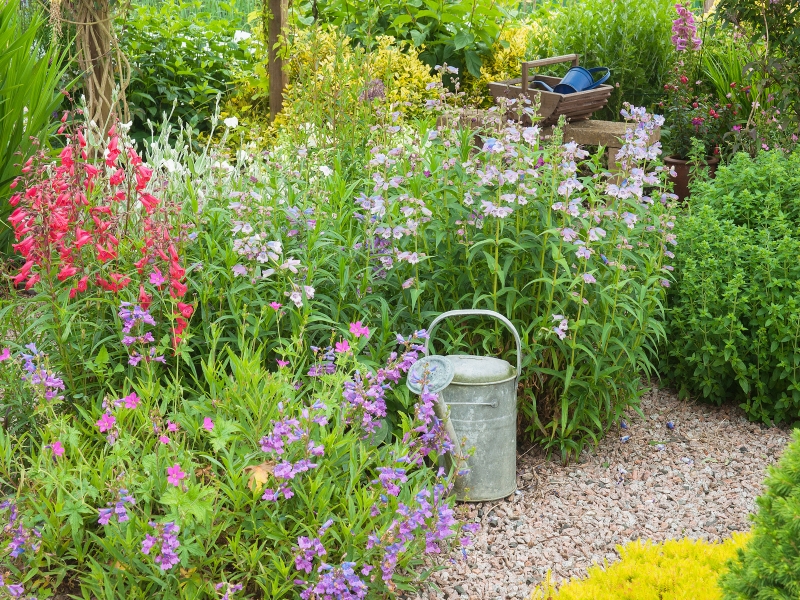
Tending a garden is a gradual process. However stepping out into the garden in June can feel like everything has happened overnight. Fruit is ready to be harvested, blooms are wonderfully wild and life seemingly bursts from every nook and cranny. June is a favourite time amongst gardeners, so make sure to enjoy your garden whilst you carry out this month’s list of jobs.
Steady with Watering
We’re getting into the season when watering will be important but remember to do it wisely – not only to conserve water – but also to encourage healthy plants. Too much moisture from over-generous watering near the surface will encourage shallow roots. This could be particularly damaging to new plants, and young shrubs and trees that need to put down deep roots during their first year to become properly established. Watering more thoroughly, but less frequently helps get the water down to the deeper root tips.
Indoors, Outdoors
On a mild rainy day, houseplants dusty from a winter indoors can go outside for a shower. Bring them in again before the sun shines, or they will scorch. Take care that weak-stemmed species are not flattened by the unaccustomed weight of raindrops.
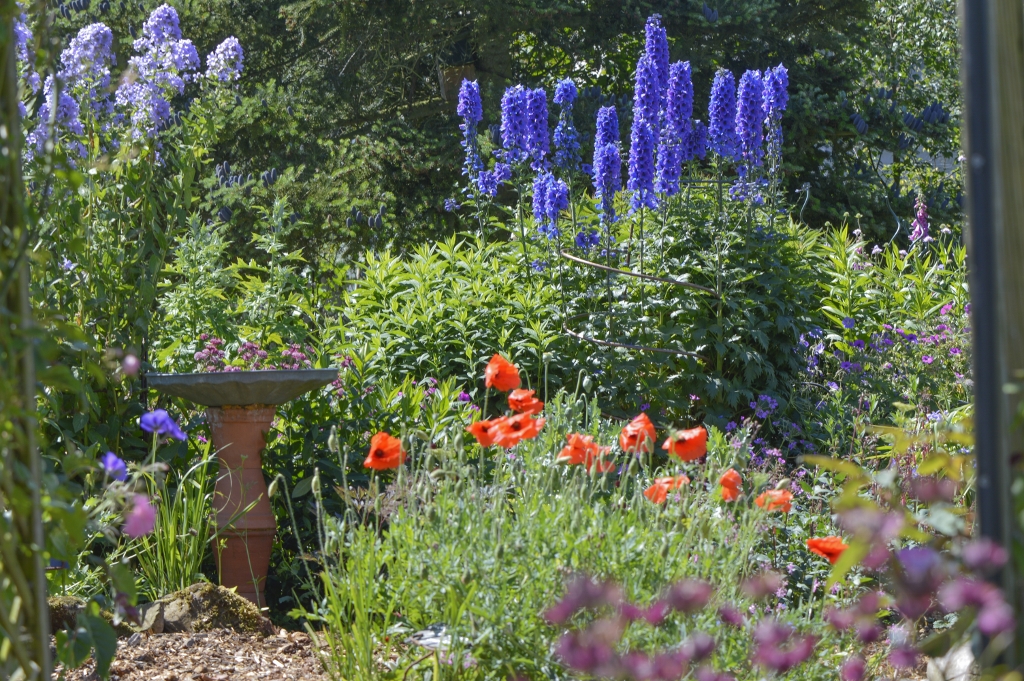
Sow Seeds for Organic Gardening
Being organic is often about doing one thing to prevent another. For example, you can control garden pests such as aphids, by attracting beneficial insects that feed on them to your garden. To do this, you should sow the seeds of the poached-egg plant, Limnanthus douglasii, which is one of the best summer annuals for attracting these beneficial visitors. In addition, the low patches of bright yellow and white flowers will look great amongst your vegetables.
Trim Clematis Montana
The different varieties of the popular Clematis Montana do not need regular pruning like other clematis, but this is the time of year, just after they have finished flowering, to give them a trim with secateurs if they need tidying up or keeping in shape.
Tomato Plants
Tomato plants grown in greenhouses should be making fruits but now. If they’re not, it’s possibly because they haven’t pollinated properly, so encourage this by shaking the clusters of yellow flowers, or watering over them with a can and rose attachment.
Feed Your Fuchsias
If you have just planted out annual fuchsias in hanging baskets, pots or a window box, remember that they are hungry plants and will ideally need a liquid feed to keep flowering. Apply feed a couple of times a week when you water the plants, and you’ll see impressive results.
Looking After Indoor Cyclamen
If you grow winter-flowering cyclamen indoors in pots, they will really benefit from a spell outside now. Put the pots outside and lie them on their sides, and the cyclamen corms will begin slowly regenerating, ready for re-potting and new growth in the autumn.
Plant Out Your Brussels Sprouts
In the flurry of summer gardening activity, it is easy to forget the things that need to be done for the succeeding months, such as planting out your brussel sprouts to make sure they are ready to give you a good crop before Christmas. Plant the seedlings 50-60 cms apart, the closer together, the smaller the sprouts you’ll get. The soil should be fertile, but if you haven’t mixed in the manure weeks ago, don’t do it now – it produces too much nitrogen, and the sprouts don’t develop tightly.
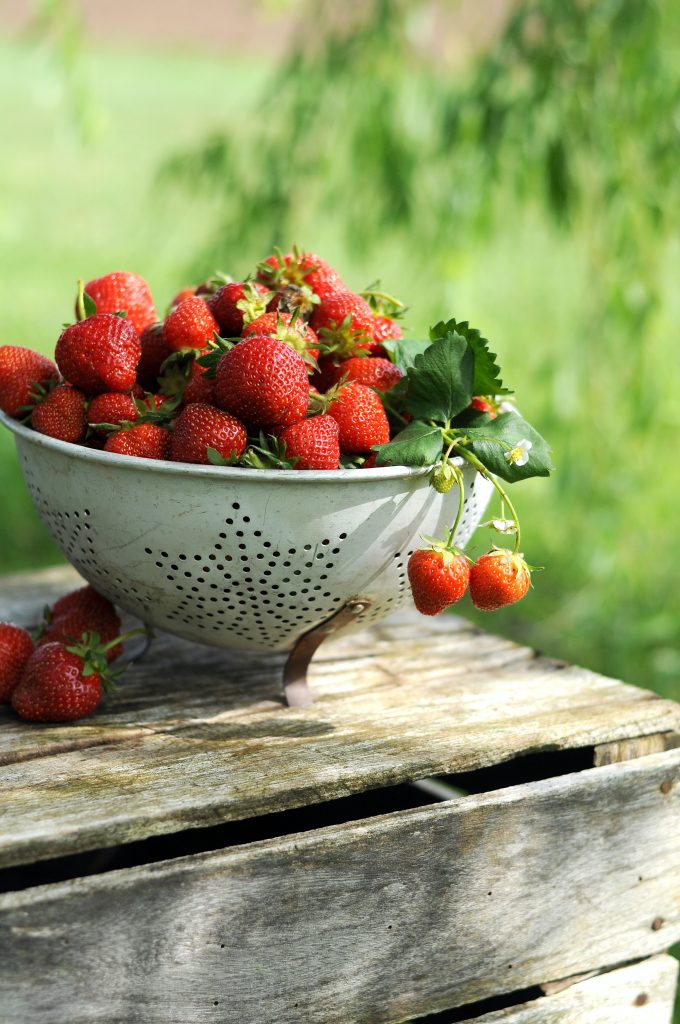 Peg Strawberry Runners
Peg Strawberry Runners
If you grow strawberries they are probably producing long new shoots called runners. Fix them to the ground with some kind of loop, and they will root and produce new plants for next season. At the same time, do ensure you have got a nice layer of fresh straw ready to keep your strawberries off the ground, and protect them from heavy rain.
Beetroot Alert
If you’re a lover of beetroot, you need to get your seed in now. Beetroot produces the best crops in fairly light soils, so make sure you add plenty of well-rotted manure, compost or leaf mould to the soil, mix it in, and sow the seed a few days later. When the seedlings appear and start to get crowded, you need to thin them, so the plants are spaced about 10cms apart.
Hoe Regularly
Even if weeds seem to always reappear, regular hoeing is a very effective way of weakening and eventually killing them off without resorting to weed killers.
Check for Mildew
This is the time of year that mildew appears on the leaves of roses, and on gooseberries and other currant bushes. It’s worth checking as regularly as you can, and removing any affected leaves or plant stems right away.
Net Your Soft Fruit
If you grow soft fruit for picking later on in the summer, they will all be very attractive to birds, so if you don’t want all your hard work to disappear in a flurry of greedy wings, make sure your fruit is netted.
Plant Aquatics
Now is a good time to plant aquatics, as the water has warmed up and will encourage growth. If you are submerging plants, it helps if they are in a container that makes them accessible. Also remember that plenty of oxygenating plants keep everything in your pond healthy.
Deadhead Rhododendrons
Deadheading rhododendrons and azaleas is a laborious job, but it pays dividends. Many of them look ugly when they have finished flowering, because they are left covered with dead brown flowers and in addition to improving their appearance, deadheading will encourage maximum flowering next season.
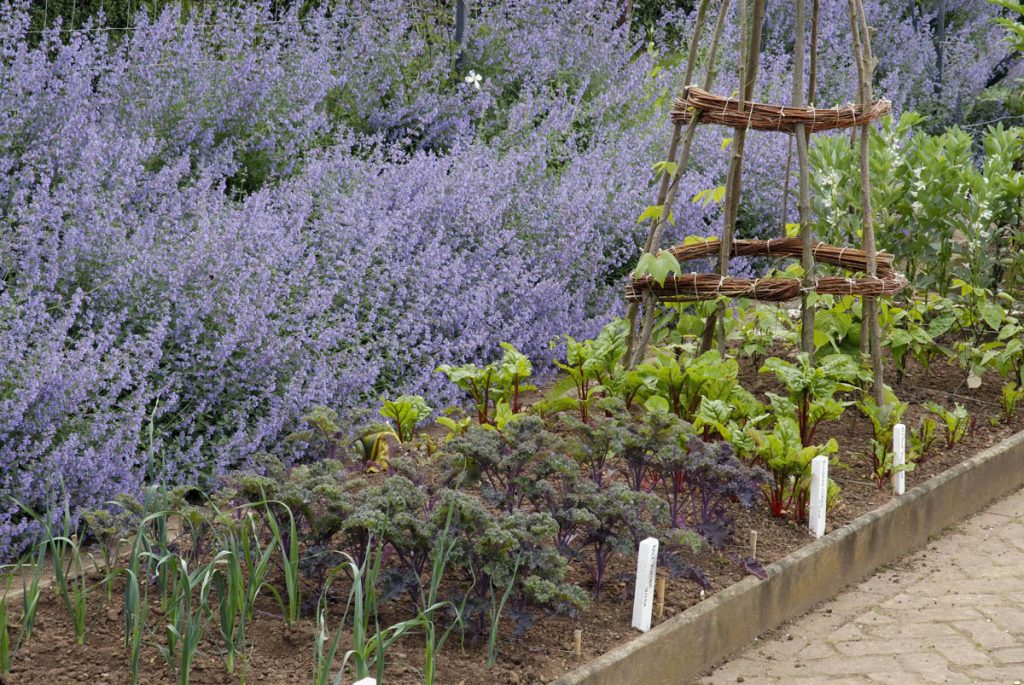
© Rowan Issac
Keep Sowing Salads
Just as you are approaching the time of year when you might have more lettuce than you know what to do with, remember that the trick is to sow little and often. So, sow some more now, and at fortnightly intervals through the summer if you have room. If you haven’t got a veg patch using containers is a good idea, so you can see which groups are going to be ready when.
Aphids on Honeysuckle
Aphids love honeysuckle, and can make the plants look awful, so it’s worth checking regularly and either picking the aphids off by hand or spraying with an environmentally friendly home-made horticultural soap.
Put Out Tomato Plants
If you have tomato plants that you been growing indoors, they should be put outside now. Make sure they are in a sunny, sheltered position, and that the growing plants are well tied into bamboo canes. They will need daily watering and a weekly feed of liquid fertiliser.
End of the Asparagus Season
If you’re lucky enough to grow asparagus, remember to stop cutting it around now, however tempting those new shoots are. If you don’t, you won’t give the plants enough time to mature for next year. Do not cut the plants down until right at the end of summer, when they have turned yellow.
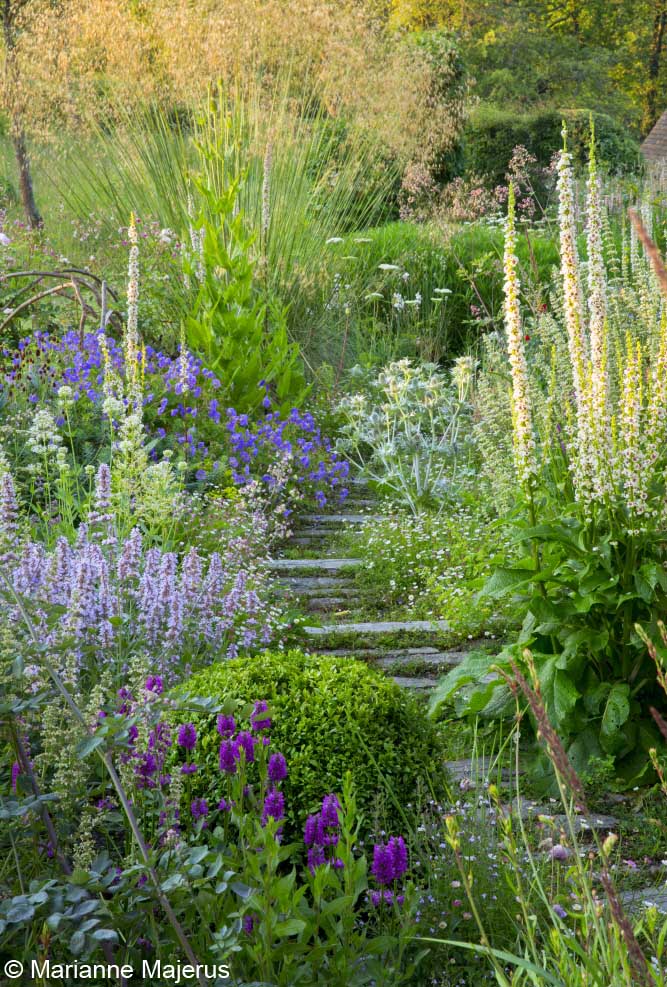
Trim Hardy Geraniums
Hardy geraniums are among the most indispensable perennial plants, and you can have different ones flowering for months. Most of the first batch, which bloom in early summer, will just be going over now, and it is worth trimming off their dead flowers and flower stems to encourage some more flowers later in the summer.
Pot Plant Rescue
In very hot weather you don’t have to forget your container plants for long for them to dry out. If this happens, and they are in a small enough container, you can often rescue them by putting the whole container in a bowl of water until the potting mixture is saturated, and then putting it in a cool shady spot for a few days.
Stake Your Dahlias
Dahlias, chrysanthemums, and other late-summer flowering specials will be growing apace. They will need support, however, and it is a good idea to put it in place now, before the plants are too big and you risk damaging the flowers that have formed. Thin stakes to tie the plants to, or another type of support frame are ideal.
Attend to Tomato Plants
This is the time to nip off the side shoots from your tomato plants to encourage healthy but controlled production along the main stem. At the same time, check that the stem is securely, but not too tightly, tied up because it will have grown rapidly during the last week or two.
Prune Ceanothus
Ceanothus have become very popular summer-flowering shrubs, and their popularity is well deserved. They quickly grow to a decent size and produce a wonderful array of blue flowers. Ceanothus often benefit from being pruned, both to keep their shape, and to control their growth vigour. The time to prune them is immediately they have flowered, so if you have one in flower now, keep an eye out.
Pinch Out Broad Beans
If you are growing broad beans, the young plants have probably reached the stage when you should pinch out their top shoot. If you pinch the shoot off with thumb and finger, this will force the plant to bulk out and concentrate its efforts into producing a crop of beans, rather than on growing.
Cut Rose Suckers
When you’re dead-heading roses with a pair of secateurs, make sure you also cut off any suckers – the long stalks with no flowers that grow vigorously from the very base of rose plants. They are ugly, and divert valuable energy resources from your plants
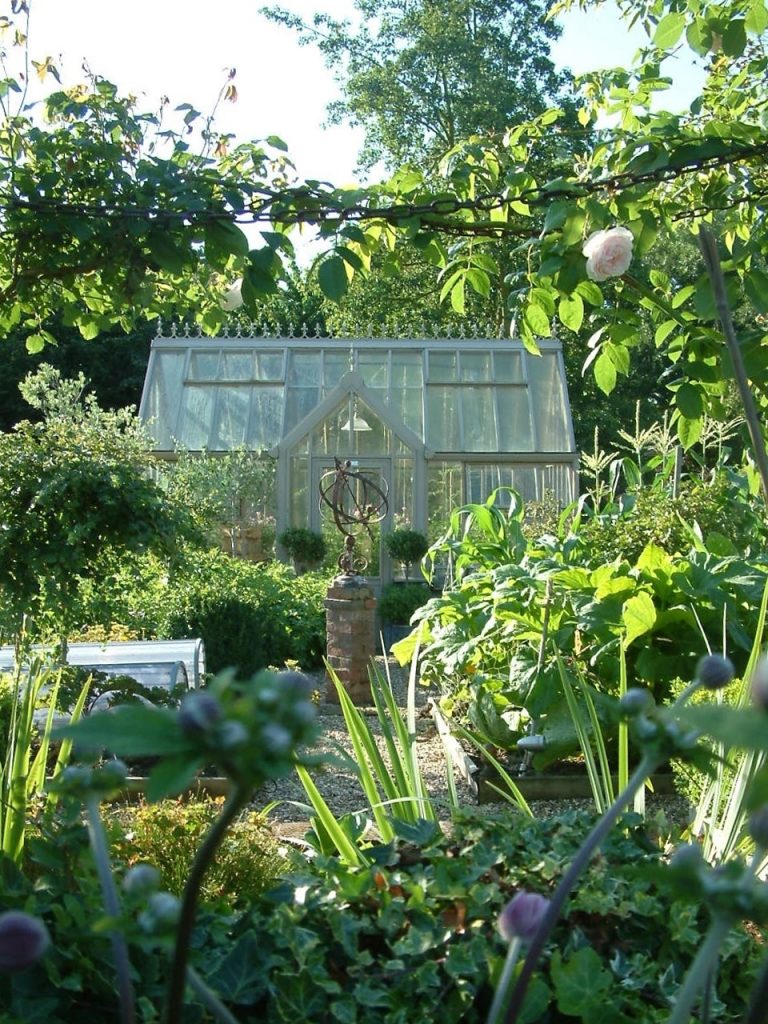
Keep the Greenhouse Ventilated
This is probably the worst time of year for greenhouse bugs and diseases, so it is vital to maintain as much ventilation as possible to encourage fresh air to circulate.
Plant Out Winter Greens
Don’t forget your winter greens. Cabbage seedlings will have made strong plants that need planting out in rows now. Put them about 50-60 cms apart and give them a good watering when planted. If you can, keep watering daily in dry weather.
Time for Taking Cuttings
This is a good time to take softwood cuttings from many shrubs and perennials. Look for a plant that has finished flowering and put on some good new growth of stems and leaves. It really is easy, so have a go.


















